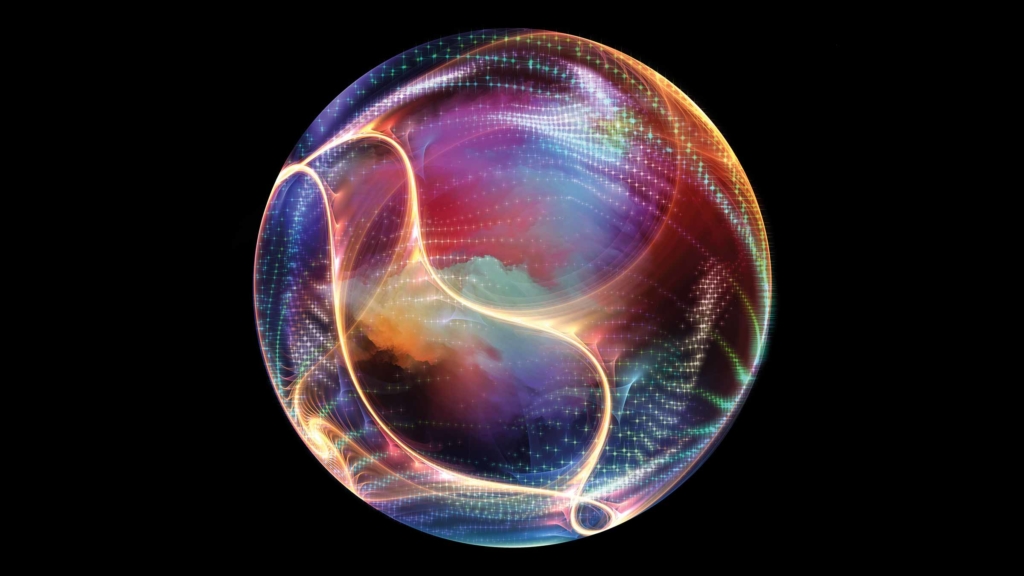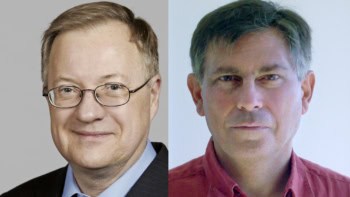David Appell reviews Lost in Math: How Beauty Leads Physics Astray by Sabine Hossenfelder
Is physics lost?
Surely not. Physicists are busy everywhere, with quantum entanglement and sterile neutrinos and climate change and exotic materials. This decade has seen two historic discoveries – the Higgs boson and gravitational waves – that shore up our best theories of the universe large and small. Often prophesized, the end of physics is nowhere in sight. There is plenty to work on – the nature of dark matter and dark energy, a quantum theory of gravity, topological materials. But “lost?” Surely not.
Sabine Hossenfelder begs to differ, and in her book Lost in Math: How Beauty Leads Physics Astray she explains why. A theoretical physicist at the Frankfurt Institute for Advanced Studies who researches possible experimental signatures of quantum gravity, Hossenfelder is not at all satisfied with many of the ideas in today’s physics of particles and space–time. These are the topics that make the covers of science magazines: supersymmetry, string theory, branes, M-theory and extra dimensions. The landscape and its 10500 false vacua. The multiverse of universes we may never reach, or even know. Axions. These ideas have no experimental backing, but, like zombies, they never die. “The LHC hasn’t seen anything that would support our newly invented laws of nature,” she writes about CERN’s king of particle accelerators, the Large Hadron Collider (LHC). Elementary particle physics is in a rut, and, Hossenfelder says, even a full-blown crisis.
There have been times in the history of physics where experimental particle data poured out of laboratories like candy, which theorists gobbled up and turned into conjectures, papers and finally models. The 1950s and 1960s was such a time, when new baryons such as the Σs and Δs were being discovered. Theorists rolled up their sleeves, puzzled through the data avalanche and created the quark model, quantum chromodynamics, electroweak unification and the now widely accepted Standard Model.
But every decade can’t be Christmas, and such bounties of new, unexplained data haven’t appeared since. Unmoored by experiments, theorists have come to rely on values other than matching reality – notions like beauty, elegance, simplicity and naturalness, to name some of the most prominent. They’ve worked before, physics students learn (even if these qualities are never defined) and are good stars by which to sail your boat. But “why should the laws of nature care what I find beautiful?” Hossenfelder asks. “The more I try to understand my colleagues’ reliance on beauty, the less sense it makes to me.”
Why should the laws of nature care what I find beautiful?
Sabine Hossenfelder
The recent experimental triumphs are the fruit of old science. The Higgs was predicted 48 years before its experimental discovery in 2012; gravitational waves, a full century ago. But today’s particle physics has experimentalists and theorists locked in a conundrum – theorists need experimentalists to validate or rule out their models, but particle experiments have become so large and so expensive – by one estimate, it cost $13.25 billion to find the Higgs particle – that the experimentalists need the theorists to tell them where to look and what to look for. There’s little spontaneous discovery as in the golden period. “Who ordered that?” Isidor Rabi said upon the discovery of the muon, but today’s menus are buffet only, no deviations allowed.
Take supersymmetry (SUSY), a theoretical space–time symmetry that pairs a bosonic, integer-spin particle to every half-integer spin fermion. It’s been studied to exhaustion but refuses to show up at the LHC. Many theorists were sure it would. SUSY is too beautiful, they say, too elegant not to show up in nature. It solves big problems, like predicting a mass for the Higgs boson without having to “fine-tune” – explain – how large numbers cancel out, to about one part in 1015. Only “natural” numbers of order one appear in the SUSY prediction for the Higgs’ mass; there is no fine-tuning. (Naturalness is the idea that dimensionless ratios of quantities in a theory’s equations should not be much different from one, and no parameters should be fine-tuned to supply miraculous cancellations.) Yet every energy upgrade at the LHC yields zilch.
Hossenfelder confronts physicists to ask them why their ideas aren’t working. Michael Krämer, who heads the new-physics group at the LHC and works on supersymmetry, tells her that he is “honestly confused”. He adds, “I thought something must happen. But now? I’m confused.” She travels to the US to show up at the offices of luminaries including Nobel laureates Frank Wilzcek and Steven Weinberg. She considers Weinberg the greatest living physicist – his office in Austin, Texas is half the size of hers, she notes, “an observation that vaporizes what little ambition I ever had to win a Nobel prize”. While he gives her a near-perfect lecture on all his various musings and ideas – including saying that he’s had “a whole career without knowing what quantum mechanics is” – he too is disappointed in the dearth of new particles from the LHC. In the end he grows hoarse and ends her visit by walking out of his own office.
Perhaps physics has slipped into a post-empirical era, beyond our technical abilities, with ideas judged by what ex-physicist now-philosopher Richard Dawid calls “non-empirical theory assessment”. Hossenfelder shudders at such talk. “I can’t believe what this once venerable profession has become,” she writes. She criticizes bias in the funding arena, when scientists work on what’s in vogue to keep the grant money flowing. “Almost all scientists today have undisclosed conflicts of interest between funding and honesty.” That’s startling if true, but who doesn’t wonder?
Hossenfelder is a good writer, funny and self-deprecating, scientifically astute, and not afraid to give umbrage. Despite its title, her book doesn’t contain a single equation. As a reader I felt I was along on her journey to make sense of her chosen profession, and I enjoyed the ride. “While I witnessed my profession slip into crisis, I slipped into my own personal crisis,” she admits. Hossenfelder has had a nomadic career of short-term research positions, but it would be good if she could find a permanent home and some security. Today’s theoretical physics needs a few malcontents asking questions that other scientists only ask themselves.
- 2018 Basic Books 304pp £23hb




